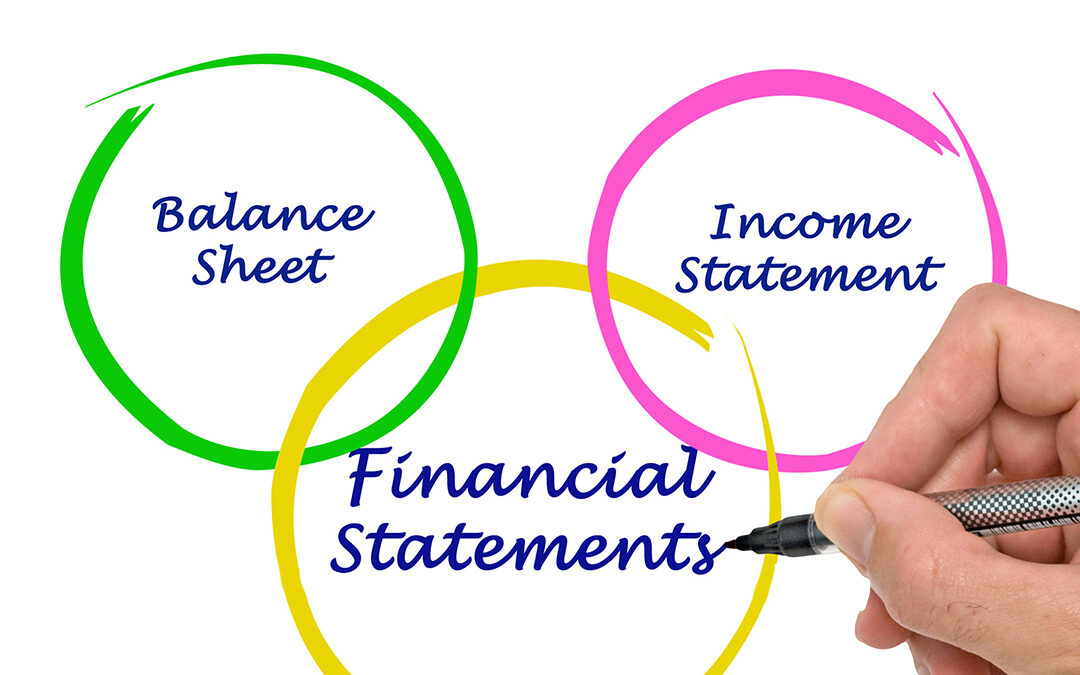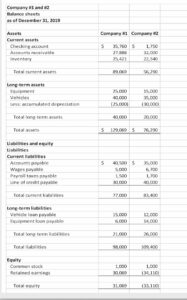Few business owners understand the wealth of information contained in their balance sheet and profit and loss statements. Your financial statements tell people how your company is performing, but they may be speaking a language you don’t yet understand.
Every tax season, business owners send us their balance sheets and profit and loss statements to prepare their income tax returns. Sometimes, they just send us QuickBooks records. They rarely look at the financial statements they send us, and many do not have a firm grasp of how financial statements are useful. In this post, we’ll talk about the importance of balance sheets, because balance sheets showcase the health of your business. Do you really want to give your banker a balance sheet showing the health of your business without reviewing and understanding it first?
A balance sheet for your business shows what you own (your assets) versus what you owe (your liabilities.) If your assets are higher than your liabilities, the difference is your equity. If your equity is negative, your business is in financial trouble, just as if your home mortgage exceeds your house value. Additionally, a balance sheet is also a living entity in that it changes every day. Balance sheets are presented for a specific date, such as December 31.
As mentioned above, there are three sections to a balance sheet: assets, liabilities, and equity.
Assets are the things your business owns. Here are some examples of assets:
- Cash on hand
- Money in bank accounts
- Accounts receivable from customers
- Inventory
- “Hard” assets such as equipment, furniture, and vehicles
- “Intangible” assets such as the original legal costs to form your business, known as “organizational” costs
There are many other types of assets, but these are the most common. If your company owns it, it is considered a company asset.
Liabilities are what you owe to someone else, such as:
- Accounts payable to vendors
- Payroll earned by employees but not paid yet
- Unpaid payroll taxes
- Notes and loans payable
Equity is what would be left if you sold your assets and paid off your liabilities. Here is an example:
Total assets = $200,000
Total liabilities = $150,000
Equity then equals $200,000 – $150,000 = $50,000
Here’s a technical term that will advance your balance sheet knowledge above that of most bookkeepers: The Accounting Equation – which is: ASSETS – LIABILITIES = EQUITY.
The higher the amount of equity, the healthier your company is. For example, if two companies are similar in asset amounts, the company with more equity is normally healthier than the other. Why? The healthier company has fewer liabilities.
Liabilities represent risk. The more liabilities, relative to assets, the more likely a company will go bankrupt. A company with $100 in assets and $1 million in liabilities is in immediate trouble.
Assets and liabilities can be further divided into current assets and liabilities and long-term assets and liabilities.
Current assets are items that can be converted into cash within one year. Here are some examples:
- Cash on hand,
- Cash in bank accounts
- Accounts receivable
- Inventory
- Payroll tax refunds
Current assets are your short-term sources of funds to pay bills.
Current liabilities are items that must be paid within a year. Here are some examples:
- Accounts payable
- Payroll earned but not paid to employees
- Payroll taxes (please pay these when due or you will incur big penalties)
- Lines of credit that renew annually and are due on demand by your bank
- Twelve months worth of principal payments on loans
If your current liabilities exceed your current assets, you are going to experience a cash crunch. This occurs when your bills exceed your short-term sources of cash for payment. If your cash crunch is severe, your company may go out of business. The ratio of current assets / current liabilities is called a current ratio and can be compared to other companies. Banks use this ratio determine your creditworthiness.
Long-term assets are not normally convertible into cash within a year. Here are some examples:
- Equipment
- Furniture
- Vehicles
- Intangible assets
Long-term liabilities are items that do not have to be paid within a year. Here are some examples:
- Vehicle loans payable
- Notes payable
- Owner loans
Now that we have examined those concepts, let’s take a look at two simple balance sheets for Company #1 and Company #2.
Which company is healthier? Let’s start by comparing the equity amounts between the two companies. Right away, you see that company #2 has negative equity. That’s a bad sign. Obviously, Company #1 is in better financial condition.
Next, let’s look next at current assets versus current liabilities. For Company #1, we have current assets of $89,069 versus current liabilities of $77,000. Company #1 has enough assets to pay its current liabilities. What about Company #2? Current assets are $56,290 versus current liabilities of $83,400. Company #2 doesn’t have the resources necessary to pay its bills. Again, Company #2 is in bad financial condition.
These are just two measures of how banks and other agencies evaluate the financial health of companies like yours. Spend some time looking at your balance sheet and see what it reveals. If you have any questions, contact Stitely and Karstetter for assistance!


